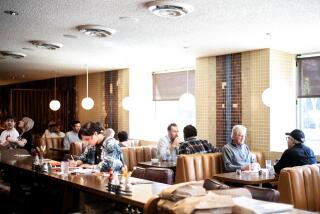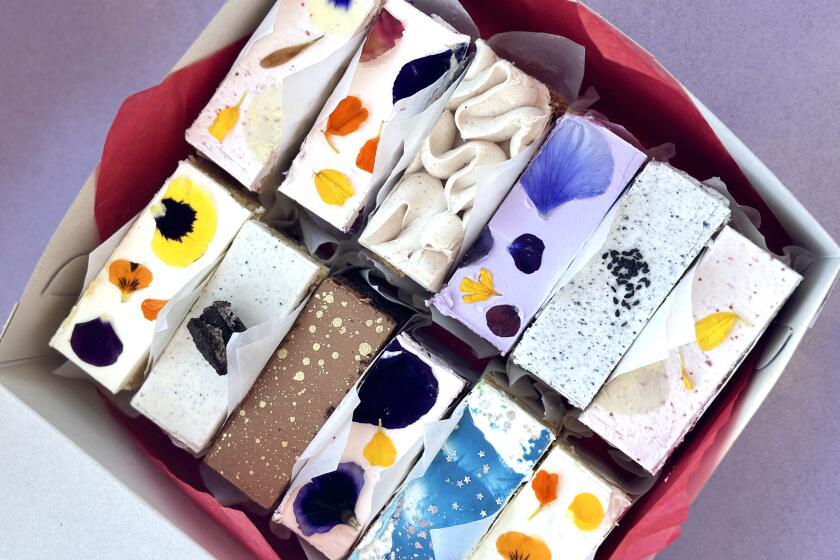July 4th: A primer
There’s nothing quite as American as the Fourth of July, the day our nation’s founders declared independence from Britain. But like Americans themselves, Independence Day traditions come from all over the globe. That picnic you’re planning, the barbecue, the corn on the cob, the apple pie and watermelon, even the fireworks have roots in other parts of the world. Here’s a guide to the customs and menus of your favorite summer holiday.
--
CORN
A Mexican immigrant
Corn, a type of grass, was first grown by Native Americans more than 7,000 years ago in what is now Mexico. But some early colonists saw divine inspiration in its spread northward. After discovering a cache of Indian corn at a time of great need, Plymouth Colony’s first governor, William Bradford, wrote: “And sure it was God’s good providence that we found this corne for we know not how else we should have done.” The corn habit stuck, and today, and more than half the world’s corn is produced in the United States.
--
WATERMELON
Fruit or vegetable?
Let’s get one thing straight regarding our favorite summer fruit: It really isn’t one. Watermelon is part of the cucumber and squash family, so isn’t a true fruit. But that hasn’t hurt its popularity. The first documented watermelon harvest was about 5,000 years ago in Egypt, where it was depicted in hieroglyphics. The melon, which is 92% water, was put in the tombs of the pharaohs to nourish them in the afterlife. By the 10th century, watermelon had reached China, which is now the world’s leading watermelon grower. According to Southern food historian John Egerton, watermelon seeds were brought to America by African slaves. Today’s varieties take from 70 to 85 days from planting to harvest. According to the U.S. Department of Agriculture, the average American will consume 15 pounds of watermelon this year.
--
BARBECUE
Cooking for a crowd
It’s no secret that Americans love their barbecue, but where did this obsession (and that weird word for it) originate? The term is thought to come from a West Indian word that Caribbean natives used to describe meat they slow-cooked over a fire above a wooden platform. By the 1800s, the tradition of grilling meat for a large crowd was well established in the American South, with pigs as the most popular meat source. The communal charring of pork provided a convenient way for politicians to garner votes and for churches to strengthen their congregations. The ritual was not tied to a particular class, as journalist Jonathan Daniels noted in the mid-20th century. “Barbecue is the dish,” he wrote, “which binds together the taste of both the people of the big house and the poorest occupants of the back end of the broken-down barn.”
--
PICNICS
Or should we say pique-nique?
Eating outdoors is a central part of many Independence Day celebrations. But it too predates America’s founding. Picnics may have started as medieval hunting feasts, but “ pique-nique” (the French term from which the English word was derived) does not appear in print until the 1692 edition of the early reference book “Origines de la Langue Francoise.” It was probably formed from the verb “ piquer,” to pick, to describe a social event where everyone brought food to share. The word made it to England by 1800, where it eventually came to describe the kind of outdoor meal we enjoy today.
--
FIREWORKS
Shock and awe
No Independence Day celebration would be complete without a fireworks display. But where do they come from? One story has it that a cook in China mixed charcoal, sulfur and potassium nitrate that he stuffed into sticks of bamboo and tossed into the fire, where the whole thing exploded with a loud bang. The noise was so frightening that observers thought perhaps the popping sticks could be used to ward off evil spirits. They quickly became standard at Chinese weddings and religious rituals. Later reports have Marco Polo bringing the firecrackers back to Italy in 1292, where they spread throughout Europe. Colonizers brought fireworks to the Americas in the 1600s, where they were used for celebrations and to alternately threaten or impress Native Americans. Over time, fireworks got more elaborate, but for almost 1,000 years, only two colors of fireworks were available: orange from black powder and white from metallic powder. Firecrackers were part of the first Fourth of July commemorations in 1777, but it wasn’t until the 1830s that Italian scientists discovered that adding metallic salt and chlorinated powder made blue, green, yellow and red explosions.
--
THE FLAG
Long may it wave
We all know the tale: George Washington and other Continental Congress members went to a young widow, the upholsterer Betsy Ross, in May 1776 and asked her to sew the new nation’s flag based on a rough design Washington showed her. According to the story, she was even bold enough to overrule Washington’s six-pointed star design. Instead, she demonstrated how to cut a five-pointed one in a single cut, which would make it easier to mass produce. The final product featured 13 stars arranged in a circle along with alternating red and white stripes to represent the original Colonies. But did any of this really happen? There is no written record of Ross’ involvement. Her grandson, William Canby, first told her story to the Historical Society of Pennsylvania in 1870, explaining that he had heard it from his grandmother. He eventually backed up his account with affidavits from aged relatives. Historians remain skeptical, due to the anecdotal nature of the record. But most acknowledge that it could have happened.
--
APPLE PIE
An all-American tradition?
For a Fourth of July dessert, what could be better than something “as American as apple pie.” But how American, really, is the nation’s favorite dessert? The first appearance of anything resembling modern pies was in ancient Greece, where people enclosed meat in pastry to preserve it. Romans appropriated the recipe when they conquered the Greeks. The first written evidence of apple pie dates to a 14th century English recipe, but the first pie recipe that included sugar dates to the 16th century. European explorers or English Pilgrims brought apple seeds to the New World, allowing the pie’s popularity to spread. As apple production increased in modern America, the treat became a culinary mainstay.
More to Read
Eat your way across L.A.
Get our weekly Tasting Notes newsletter for reviews, news and more.
You may occasionally receive promotional content from the Los Angeles Times.






